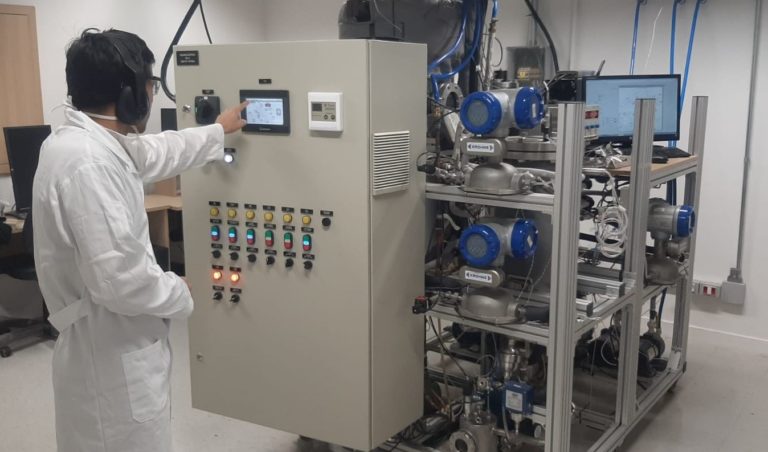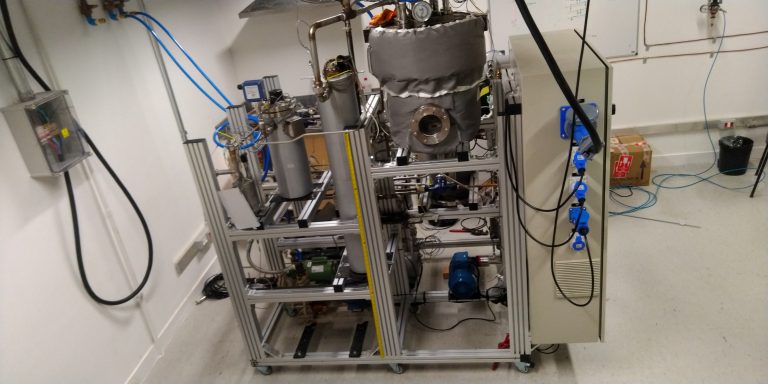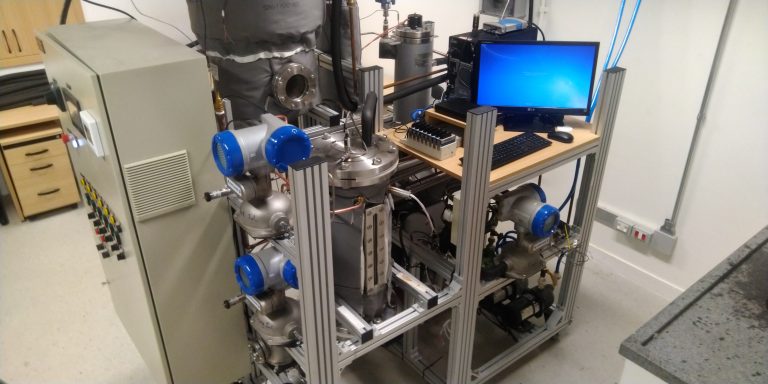Topics of interest:
- Simultaneous heat and mass transfer in absorption and generation processes.
- Absorption refrigeration cycle performance under real operating conditions
- Solar cooling: couplings of absorption cooling systems with solar energy as pulsating tubes
- Energy efficiency in absorption refrigeration systems for industrial applications and air- conditioning
Background:
Since its creation, SISEA has been committed to the issue of sustainable processes for life. Within the need to preserve the environment, it develops activities related to the energy efficiency of industrial, commercial and domestic processes, among other actions.
The realization of climate change to more extreme temperature conditions motivates the intense use of refrigeration in industrial processes, food conservation and air-conditioning of living environments, among other situations.
The development of Thermodynamics science provided the idealization of refrigeration processes by: vapor compression cycle, air compression cycle, ejectors, Seebeck effect, Vortex system and absorption cycle.
A substantially long period of abundant electrical energy availability and low price boosted the use of vapor compression cycles which, when threatened by the use of environmentally harmful refrigerants, overcame the difficulty with other non-aggressive fluids. However, the consumption of electricity due to intensive use of refrigeration by steam compression cycles results in an impact on the emissions of carbon dioxide emitted by thermoelectric plants.
SISEA, aware of this fact, chose to focus its training on the development of constituents of absorption refrigeration cycles. The primary source of energy to drive this cycle is thermal, that is, it can come from process waste heat or solar energy. In any case, carbon dioxide emissions are not added and the use of electricity is in small amounts as it is restricted to the movement of liquids through pumps, which, compared to conventional systems, consumes about 3%.
Experimental test rig:
The figures show the experimental bench of the absorption refrigeration system using ammonia-water as the working fluid. The experimental bench study the simultaneous heat and mass transfer coefficients in the generator and absorber under different operating conditions. The advantages of the equipment when compared to the conventional ones justify the technological development of this system for the demands of the current world.



Publications:
List of main publications:
- Narvaez-Romo, B., Zavaleta-Aguilar, E.W, Simões-Moreira, J. R. (2021).Heat and mass transfer in falling films technology applied to the generator and the rectifier of an ammonia-water absorption refrigeration cycle, In Press.
- Narvaez-Romo, B., Leite, B. M., Simões-Moreira, J. R. (2020). Ammonia-water absorption process on falling films at vertical and inclined plates. Heat Transfer Research, 51(4).
- Narváez-Romo, B., Chhay, M., Zavaleta-Aguilar, E. W., Simões-Moreira, J. R. (2017). A critical review of heat and mass transfer correlations for LiBr-H2O and NH3-H2O absorption refrigeration machines using falling liquid film technology. Applied Thermal Engineering, 123, 1079-1095.
- Narvaez-Romo, B., Simoes-Moreira, J. R. (2017). Falling liquid film evaporation in subcooled and saturated water over horizontal heated tubes. Heat Transfer Engineering, 38(3), 361-376.
- Zavaleta-Aguilar, E. W., Simões-Moreira, J. R. (2015). Horizontal tube bundle falling film distiller for ammonia–water mixtures. International Journal of Refrigeration, 59, 304-316.
- Zavaleta-Aguilar, E. W., Simões-Moreira, J. R. (2012). Thermal design of a tray-type distillation column of an ammonia/water absorption refrigeration cycle. Applied thermal engineering, 41, 52-60.
Applications – Solar Refrigeration
Refrigeration systems applied to air-conditioning are widely used in commercial and office environments and aim to ensure thermal comfort. Compression refrigeration systems are the most commonly used types commercially and convert electrical energy into cooling. However, its high consumption of electrical energy promotes energy peaks in the distribution network. In addition, air conditioning is responsible for 60% of the energy consumed in homes, and this percentage is between 60% and 80% in commercial and public buildings (OPOKU; EDWIN; AGYARKO, 2019; WELLS; HAAS, 2004).
Alternatively, the integration of cooling systems with solar energy, known as solar cooling, can be used to reduce or eliminate the demand for electrical energy from conventional energy sources. In this way, renewable energy presents a good alternative for presenting lower emission of greenhouse gases throughout its life cycle and ensuring more security in the energy supply. The potential depends on the exploitation of locally available resources and environmental challenges (HASAN; SUMATHY, 2010). The use of heat and energy from thermal and photovoltaic collectors can be carried out widely in Brazil, since there is a high incidence of solar radiation in most of the territory (TIBA, 2000).
The high average solar irradiation available in Brazil, when compared to the world average, contributes to the viability of systems for capturing and converting solar energy into electrical energy or thermal energy. Compression refrigeration cycles require electrical energy to operate, while absorption refrigeration cycles make use of thermal energy. The most common working fluids in absorption refrigeration systems are ammonia-water and water-lithium bromide. The ammonia-water pair can be used in different applications, including in refrigeration systems that demand temperatures below 0°C (NARVÁEZ-ROMO et al., 2017, NARVÁEZ-ROMO, 2020). On the other hand, the use of water-lithium bromide as a working fluid is common for air conditioning applications due to the limitations of the thermodynamic properties of the refrigerant fluid.
In this way, applications of absorption refrigeration systems for air conditioning of an environment or for refrigeration are carried out. It is modeled from the integration of Energy Plus with the thermodynamic models of absorption refrigeration cycles.
Figure 1. Schematic representation of solar refrigeration using solar thermal energy to drive the absorption refrigeration cycle.



